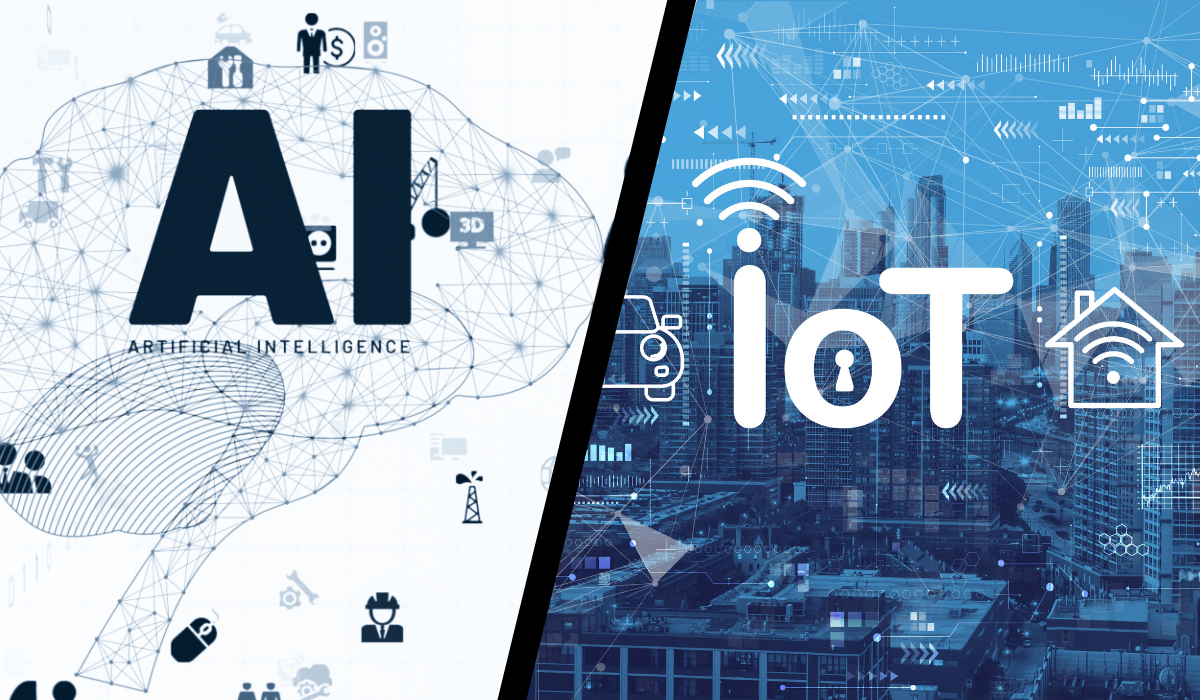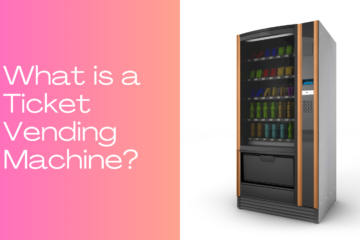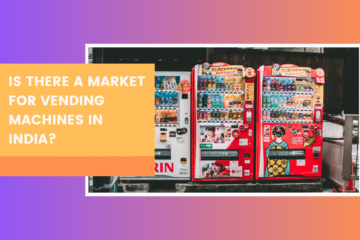Vending machines have come a long way since their inception, evolving from simple mechanical devices to complex, intelligent systems. As technology advances, the integration of the Internet of Things (IoT) and Artificial Intelligence (AI) in vending machines is revolutionizing the industry. This article delves into the history, current state, and future trends of vending machines, highlighting the transformative impact of IoT and AI.
Evolution of Vending Machines
Early Vending Machines and Their Functionality
Early vending machines, introduced in the late 19th century, were simple mechanical devices that dispensed postcards, gum, or candies. These machines operated on basic mechanical principles, offering limited functionality and requiring manual maintenance.
Technological Advancements Over the Years
Over the decades, vending machines have undergone significant technological advancements. The introduction of electronic components in the mid-20th century allowed for more complex operations, including the ability to accept various forms of payment and provide change. Digital displays and computerized inventory management further enhanced their capabilities.
Current State of Vending Machines
Today, vending machines are highly sophisticated, offering a wide range of products and services. Modern machines are equipped with touchscreens, cashless payment options, and real-time inventory monitoring. The integration of IoT and AI is taking these capabilities to the next level, enabling smarter and more efficient operations.
The Role of IoT in Vending Machines
Definition of IoT and Its Relevance
The Internet of Things (IoT) refers to the network of interconnected devices that communicate and exchange data. In the context of vending machines, IoT enables real-time monitoring, remote management, and data-driven decision-making, significantly improving operational efficiency.
How IoT Enhances Vending Machine Operations
IoT technology allows vending machines to communicate with a central system, providing real-time data on inventory levels, machine status, and user interactions. This connectivity enables operators to optimize stock levels, reduce downtime, and respond promptly to maintenance needs, ensuring a seamless customer experience.
Examples of IoT-Enabled Vending Machines
Many vending machines today are equipped with IoT capabilities. For example, some machines can alert operators when stock is low or when maintenance is required. Others use IoT data to analyze consumer preferences and adjust product offerings accordingly, enhancing both efficiency and customer satisfaction.
AI’s Impact on Vending Machines
Understanding AI in Simple Terms
Artificial Intelligence (AI) involves the simulation of human intelligence processes by machines, particularly computer systems. In vending machines, AI can analyze vast amounts of data to make informed decisions, personalize user experiences, and optimize operations.
AI’s Role in Improving User Experience
AI-driven vending machines can provide personalized recommendations based on user preferences and purchasing history. For instance, a machine might suggest a favorite snack or offer a discount on a frequently purchased item, enhancing the overall customer experience.
Case Studies of AI-Driven Vending Machines
Several companies have successfully implemented AI in their vending machines. For example, AI algorithms can predict demand patterns, allowing operators to stock machines more efficiently. Additionally, AI-powered machines can recognize individual users and tailor their interactions, providing a more personalized experience.
Benefits of IoT and AI Integration
Enhanced Efficiency and Maintenance
The integration of IoT and AI in vending machines leads to greater operational efficiency. Real-time monitoring and predictive maintenance reduce downtime, while AI-driven analytics help optimize inventory management and reduce waste.
Personalized Customer Experience
IoT and AI enable vending machines to offer a more personalized experience. By analyzing user data, machines can make tailored recommendations, offer personalized promotions, and create a more engaging interaction with customers.
Improved Inventory Management
AI and IoT technologies provide real-time insights into inventory levels, allowing operators to restock products more efficiently. Predictive analytics can also forecast demand, ensuring that popular items are always available and reducing the risk of stockouts.
Challenges and Solutions
Technical Challenges in Integrating IoT and AI
Integrating IoT and AI into vending machines presents several technical challenges, including data interoperability, network connectivity, and system integration. Addressing these challenges requires robust infrastructure and advanced technical expertise.
Security and Privacy Concerns
The use of IoT and AI raises concerns about data security and privacy. Ensuring the protection of user data and securing communication channels is critical to maintaining trust and compliance with regulations.
Solutions to Overcome These Challenges
Implementing robust cybersecurity measures, such as encryption and secure authentication, can mitigate security risks. Additionally, adopting standardized protocols and frameworks can enhance data interoperability and system integration.
Future Trends in Vending Machines
Predictive Analytics and Its Applications
Predictive analytics will play a crucial role in the future of vending machines. By analyzing historical data, AI can forecast demand trends, optimize stock levels, and anticipate maintenance needs, improving overall efficiency.
Voice Recognition and Natural Language Processing
Voice recognition and natural language processing technologies are set to revolutionize user interactions with vending machines. These technologies will enable customers to make purchases and inquiries using voice commands, enhancing convenience and accessibility.
Integration with Mobile and Digital Payment Systems
The integration of mobile and digital payment systems will continue to advance, allowing customers to make seamless and secure transactions using their smartphones or other digital devices. This trend will further enhance the convenience of using vending machines.
Real-World Applications
Examples from Different Industries
Vending machines equipped with IoT and AI are being utilized across various industries. In healthcare, machines dispense medical supplies and medications. In retail, they offer a wide range of products, from snacks to electronics. The hospitality industry uses vending machines to provide convenient services to guests.
Success Stories and Innovative Uses
There are numerous success stories of innovative vending machine applications. For instance, some vending machines offer fresh, healthy meals in urban areas, addressing the demand for convenient and nutritious food options. Others provide essential products in remote or underserved locations.
Consumer Feedback and Acceptance
Consumer feedback has been largely positive, with many appreciating the convenience, variety, and personalized experiences offered by modern vending machines. As technology continues to evolve, user acceptance and satisfaction are expected to grow.
Economic Impact
Cost Implications for Businesses
While the initial investment in IoT and AI-enabled vending machines may be higher, the long-term benefits, including reduced operational costs and increased efficiency, can outweigh the expenses. Businesses can achieve a favorable return on investment (ROI) through improved sales and optimized operations.
ROI and Long-Term Benefits
The integration of IoT and AI offers significant long-term benefits, including enhanced efficiency, improved customer satisfaction, and data-driven decision-making. These advantages contribute to a positive ROI, making the investment worthwhile for businesses.
Impact on the Job Market
As vending machines become more automated, there may be concerns about job displacement. However, the demand for skilled technicians to maintain and manage these advanced machines is likely to increase, creating new job opportunities in the tech and service sectors.
Environmental Considerations
Energy Efficiency Improvements
IoT and AI technologies can enhance the energy efficiency of vending machines. Smart systems can optimize energy usage by adjusting temperature settings, reducing power consumption during low-usage periods, and implementing eco-friendly practices.
Sustainability Through Smart Inventory Management
Smart inventory management enabled by IoT and AI can reduce waste by ensuring that products are stocked based on demand patterns. This approach minimizes the risk of expired or unsold items, contributing to sustainability efforts.
Reducing Waste with Precise Stocking
Accurate stocking based on predictive analytics helps reduce waste by ensuring that vending machines carry the right products in the right quantities. This precision reduces the likelihood of overstocking and spoilage, promoting more sustainable practices.
Vending Machines in Smart Cities
Role in Urban Development
Vending machines play a crucial role in smart city initiatives by providing convenient access to goods and services. They contribute to the urban ecosystem by offering essential items in public spaces, enhancing the quality of life for residents and visitors.
Integration with Smart City Infrastructure
Smart vending machines can integrate with other smart city infrastructure, such as public transportation systems and digital kiosks. This integration enables a seamless and interconnected urban experience, enhancing the overall efficiency of city services.
Future Possibilities and Innovations
The future of vending machines in smart cities holds immense potential. Innovations such as autonomous restocking drones, AI-driven demand forecasting, and enhanced user interfaces will continue to evolve, making vending machines an integral part of urban living.
User Experience and Engagement
Enhancing Interaction Through Touchscreens and Apps
Modern vending machines often feature touchscreens and companion apps, providing an interactive and user-friendly experience. Customers can browse products, read reviews, and make purchases with ease, enhancing overall engagement.
Loyalty Programs and Personalized Offers
Loyalty programs and personalized offers incentivize repeat purchases and foster customer loyalty. Vending machines can utilize AI to analyze purchasing behavior and deliver targeted promotions, creating a more engaging and rewarding experience for users.
Feedback Collection and Customer Satisfaction
Collecting customer feedback through IoT-enabled vending machines allows operators to understand user preferences and improve service quality. AI can analyze this feedback to make data-driven decisions, enhancing customer satisfaction and ensuring continuous improvement.
Customization and Flexibility
Tailoring Offerings to Specific Locations
IoT and AI enable vending machines to tailor product offerings based on the specific preferences and needs of different locations. For example, machines in office buildings might offer snacks and beverages, while those in gyms might provide fitness supplements and healthy snacks.
Adapting to Consumer Preferences
By analyzing consumer data, vending machines can adapt to changing preferences and trends. This flexibility ensures that machines remain relevant and appealing to customers, driving higher engagement and sales.
Examples of Customized Vending Machines
There are numerous examples of customized vending machines. Some machines offer gourmet coffee in office buildings, while others provide fresh produce in urban areas. This customization ensures that vending machines meet the unique demands of their specific environments.
Regulatory and Ethical Considerations
Compliance with Local and International Regulations
Vending machines must comply with local and international regulations, including those related to food safety, data privacy, and electronic transactions. Ensuring compliance is essential to maintaining trust and avoiding legal issues.
Ethical Implications of AI and IoT in Vending Machines
The use of AI and IoT in vending machines raises ethical considerations, such as data privacy and algorithmic transparency. Operators must ensure that AI algorithms are fair and unbiased and that user data is handled responsibly and ethically.
Ensuring Transparency and Accountability
Transparency and accountability are crucial when implementing AI and IoT technologies in vending machines. Operators should clearly communicate how data is collected, used, and protected, fostering trust and ensuring compliance with ethical standards.
Conclusion
The integration of IoT and AI is revolutionizing the vending machine industry, offering enhanced efficiency, personalized experiences, and innovative applications. As technology continues to evolve, vending machines will play an increasingly vital role in smart cities and urban development. Embracing these advancements presents opportunities for businesses to improve operations, meet consumer demands, and contribute to sustainable practices.
FAQs
1. What is IoT and how does it apply to vending machines?
The Internet of Things (IoT) refers to the network of interconnected devices that communicate and exchange data. In vending machines, IoT enables real-time monitoring, remote management, and data-driven decision-making, improving operational efficiency and customer experience.
2. How does AI enhance vending machine operations?
Artificial Intelligence (AI) enhances vending machine operations by analyzing data to make informed decisions, personalize user experiences, and optimize inventory management. AI-driven machines can predict demand patterns, offer personalized recommendations, and improve overall efficiency.
3. What are the benefits of integrating IoT and AI in vending machines?
Integrating IoT and AI in vending machines offers several benefits, including enhanced efficiency, personalized customer experiences, improved inventory management, and reduced operational costs. These technologies enable smarter, more responsive vending machine operations.
4. What are some challenges associated with IoT and AI in vending machines?
Challenges associated with IoT and AI in vending machines include technical issues such as data interoperability, network connectivity, and system integration. Security and privacy concerns are also significant, requiring robust cybersecurity measures to protect user data.
5. How will vending machines evolve in the future?
Future vending machines will incorporate advanced technologies such as predictive analytics, voice recognition, and integration with mobile and digital payment systems. These innovations will enhance user interactions, improve efficiency, and contribute to the development of smart cities.




